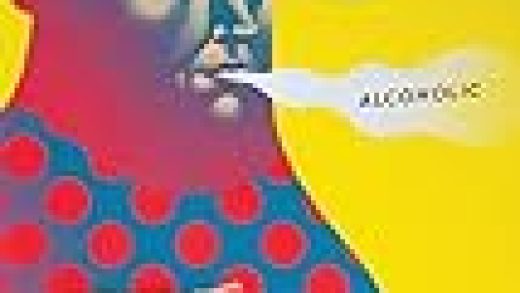Did the cosmos just hand us a meme that encapsulates our feelings about the universe and our place within it?
At times it seems as though astronomers will forever find enigmas about space without ever providing satisfying answers. But in this case, the James Webb Space Telescope has found a riddle in the sky, and scientists can actually give us an explanation for it. Webb, an infrared telescope built by NASA and its European and Canadian counterparts, captured this image of galaxy cluster MACS-J0417.5-1154. It looks like a literal question mark.
That’s because massive celestial objects are warping the fabric of spacetime and distorting galaxies in the background, playing tricks like a funhouse mirror. The effect is caused by a quirk of nature known as gravitational lensing, a phenomenon predicted in Albert Einstein’s General Theory of Relativity.
“These galaxies, seen billions of years ago when star formation was at its peak, are similar to the mass that the Milky Way galaxy would have been at that time,” said Marcin Sawicki, an astronomer at Saint Mary’s University in Nova Scotia, in a statement. “Webb is allowing us to study what the teenage years of our own galaxy would have been like.”
Scientists haven’t found a rocky exoplanet with air. But now they have a plan.

Credit: NASA / ESA / CSA / STScI / Vicente Estrada-Carpenter
The image shows two distant interacting galaxies: one a face-on spiral; the other dusty red in side view. They appear multiple times, with the dusty red galaxy forming the arc of the question-mark shape.
To explain how gravitational lensing works, astronomers start with the analogy of a bowling ball placed on a foam mattress or trampoline. This depicts how the fabric of spacetime bends around massive celestial objects. Light that would otherwise travel straight gets distorted as it passes through the warped spacetime.
In this case, the galaxy cluster is acting like a colossal magnifying glass. The perk of that extra prescription strength is its ability to extend the view of Webb to see even earlier galaxies.
Astronomers are now familiar with spotting the telltale signs of gravitational lensing, but that wasn’t always the case. In 1987, an enormous blue arc thought to be hundreds of trillions of miles long was at first considered one of the largest objects ever detected in space. The arc was found near the galaxy cluster Abell 370, with another similar object near galaxy cluster 2242-02.
Later that year, scientists at Stanford University and the National Optical Astronomy Observatory in Arizona sorted out that these objects were, in fact, optical illusions, distorted by Abell 370. The New York Times published a story about the “bizarre” implication of Einstein’s theory, titled “Vast Cosmic Object Downgraded to a Mirage.”
“Webb is allowing us to study what the teenage years of our own galaxy would have been like.”
The lensing in this new Webb image allows scientists to pinpoint star formation, using infrared data from the observatory, coupled with ultraviolet data from NASA’s Hubble Space Telescope. Hubble has previously observed this region, but murky cosmic dust prevented it from detecting the dusty red galaxy.
With Webb, the galaxy’s longer wavelengths of light were picked up. The team’s findings, a sort of case study for Webb’s ability to detect star formation within a galaxy billions of light-years away, is published in the Monthly Notices of the Royal Astronomical Society.

Credit: NASA / ESA / CSA / STScI / Vicente Estrada-Carpenter
The question mark is actually five copies of the galaxy pair, four of which make the top of the question mark. The dot below them is an unrelated galaxy that just happens to be in the right place from Webb’s vantage point.
Neither of the interacting galaxies’ shapes appears too disrupted, an indicator that the duo is just beginning to interact. Studying such distant regions could yield fresh insights for scientists, astronomer Vicente Estrada-Carpenter said.
“Knowing when, where, and how star formation occurs within galaxies is crucial to understanding how galaxies have evolved over the history of the universe,” he said in a statement.
Source : Webb telescope has answers for an actual question mark in space












